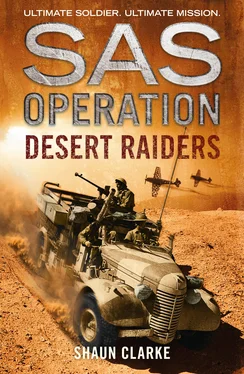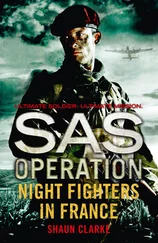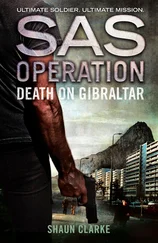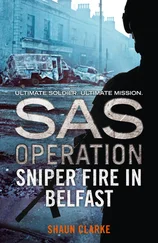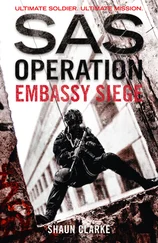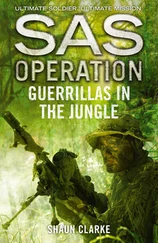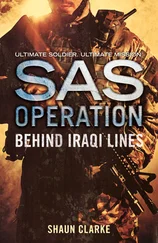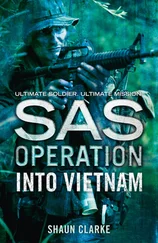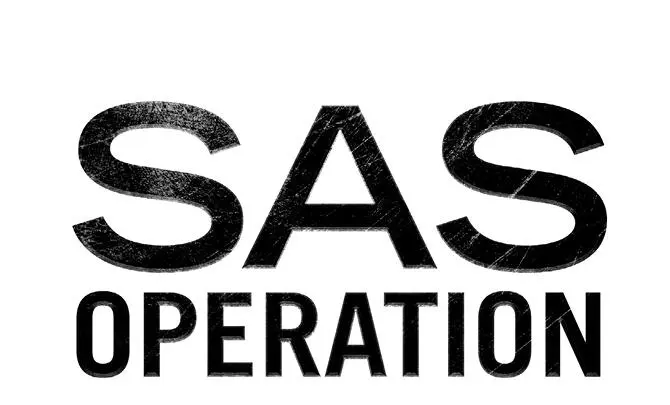
SHAUN CLARKE

Published by HarperCollins Publishers Ltd
1 London Bridge Street
London SE1 9GF
www.harpercollins.co.uk
First published in Great Britain by 22 Books/Bloomsbury Publishing plc 1994
Copyright © Bloomsbury Publishing plc 1994
Cover layout design © HarperCollins Publishers Ltd 2016
Cover photographs © Popperfoto/Getty Images (soldiers in jeep); Keystone/Getty Images (planes); Shutterstock.com (textures)
Shaun Clarke asserts the moral right to be identified as the author of this work.
A catalogue copy of this book is available from the British Library.
This novel is entirely a work of fiction. The names, characters and incidents portrayed in it are the work of the author’s imagination. Any resemblance to actual persons, living or dead, events or localities is entirely coincidental.
All rights reserved under International and Pan-American Copyright Conventions. By payment of the required fees, you have been granted the non-exclusive, non-transferable right to access and read the text of this e-book on screen. No part of this text may be reproduced, transmitted, down-loaded, decompiled, reverse engineered, or stored in or introduced into any information storage and retrieval system, in any form or by any means, whether electronic or mechanical, now known or hereinafter invented, without the express written permission of HarperCollins.
Source ISBN: 9780008155001
Ebook Edition © November 2015 ISBN: 9780008155018
Version: 2015-10-15
Contents
Cover
Title Page
Copyright Published by HarperCollins Publishers Ltd 1 London Bridge Street London SE1 9GF www.harpercollins.co.uk First published in Great Britain by 22 Books/Bloomsbury Publishing plc 1994 Copyright © Bloomsbury Publishing plc 1994 Cover layout design © HarperCollins Publishers Ltd 2016 Cover photographs © Popperfoto/Getty Images (soldiers in jeep); Keystone/Getty Images (planes); Shutterstock.com (textures) Shaun Clarke asserts the moral right to be identified as the author of this work. A catalogue copy of this book is available from the British Library. This novel is entirely a work of fiction. The names, characters and incidents portrayed in it are the work of the author’s imagination. Any resemblance to actual persons, living or dead, events or localities is entirely coincidental. All rights reserved under International and Pan-American Copyright Conventions. By payment of the required fees, you have been granted the non-exclusive, non-transferable right to access and read the text of this e-book on screen. No part of this text may be reproduced, transmitted, down-loaded, decompiled, reverse engineered, or stored in or introduced into any information storage and retrieval system, in any form or by any means, whether electronic or mechanical, now known or hereinafter invented, without the express written permission of HarperCollins. Source ISBN: 9780008155001 Ebook Edition © November 2015 ISBN: 9780008155018 Version: 2015-10-15
Prelude
Chapter 1
Chapter 2
Chapter 3
Chapter 4
Chapter 5
Chapter 6
Chapter 7
Chapter 8
Chapter 9
Chapter 10
Chapter 11
Chapter 12
Chapter 13
Chapter 14
Chapter 15
Chapter 16
Chapter 17
Chapter 18
OTHER TITLES IN THE SAS OPERATION SERIES
About the Publisher
‘It’s one helluva sight to behold,’ Lieutenant Derek ‘Dirk’ Greaves said, shading his eyes with his hand. ‘Very impressive indeed.’
The camp was located just outside Mersa Brega, in Libya’s vast Cyrenaica Desert. It was a sprawling collection of tents, lean-tos, makeshift huts and caravans overflowing with the men of the 7th Armoured Division and Selby Force, 4th Indian Division, 6th Australian Division, Royal Electrical and Mechanical Engineers (REME), Royal Army Medical Corps (RAMC), sappers, a Cypriot labour battalion and the hundreds of ragged Italian 10th Army soldiers packed into POW cages near the southern perimeter. Though holding a vast array of artillery and tanks, the camp was also protected by British infantry divisions spread out in a defensive line consisting of a series of ‘boxes’ – slit trenches for the infantry, gun pits for the artillery – surrounded by barbed wire and minefields, though these were far away, well spread out, and out of sight.
The camp itself, Greaves noticed, was ringed with the 25-pounders of the Royal Horse Artillery, an equal number of British six-pounders, Bofors anti-aircraft guns, stone sangars manned by teams equipped with Bren guns and 0.5-inch Browning machine-guns, and even some captured Italian 75mm and 79mm guns to be manned by infantrymen, signallers, orderlies and cooks if battle commenced. It also contained what appeared to be hundreds of armoured vehicles. All dispersed evenly behind the line, these included the M3 Stuart light tanks of the 8th King’s Royal Irish Hussars, the Grant tanks of the Royal Gloucester Hussars, the Matildas of the 7th Royal Tank Regiment, the Bren carriers of the 9th Rifle Brigade, and Marmon Herrington armoured cars.
Beyond the perimeter, on all sides, Greaves saw nothing but the ‘blue’ – the soldiers’ term for the desert – stretching away to the dust-wreathed horizon under a brilliant azure sky. By night the desert was freezing cold, but during the day the heat was fierce, shimmering up off the desert floor, hurting the eyes, making the sweat flow and leading to short tempers and fist fights. Tempers were also sparked off by the constant dust, blowing every second of every day and night, covering everything, filling the throat and nostrils, getting into food and drink and even sleeping bags, and which swirled in moaning clouds and drifted over the plains of rocky ground, soft sand and gravel. The dust also charged the metal parts of vehicles with electricity, shorting out the engines, often stopping the vehicles altogether and giving the men electric shocks.
Even worse were the flies, thousands of them, all enormous, attacking eyes and ears, dropping into the tea and bully beef, the tinned ‘M and V’ (meat and vegetables), into the herrings and tomatoes and dehydrated potatoes, buzzing noisily, frantically, all day long, and making a visit to the ‘thunderbox’ to answer the call of nature a veritable endurance test.
As for the freezing nights, though there was some respite from the flies, an alternative torment came in the shape of lice, bugs and cockroaches and, if a soldier became too careless, poisonous scorpions. All of these drove the men crazy and led to frayed tempers.
Last but by no means least of their torments was a constant and hellish thirst. The water, which had to be transported laboriously from Cairo or Alexandria, was warm, salty, distilled sea water that just about kept them alive while failing dismally to assuage the unrelenting dryness of their throats. Foul to drink on its own, it was more satisfactory in a brew-up, though even then its high salt content curdled the tinned milk and filled the mugs with soft, disgusting curds. The tea was more refreshing than the water, but even that failed to quench their thirst.
In combination with the heat, dust, and insects, the thirst may have contributed to some of the men’s crazier antics. Having just completed their spectacular rout of the Italian 10th Army, the Tommies were flush with victory and displayed it in the way they dressed. A company commander of the Argyll and Sutherland Highlanders wore an Italian brigadier’s uniform with sea boots; British troops of the 2nd Armoured Division boasted Australian slouch hats, a bersagliere ’s plumed hat, or the regalia of Blackshirt colonels; soldiers of the 9th Australian Division bore captured Italian pistols, with binoculars slung rakishly around their necks, as well as wearing the ceremonial gold-braided tunics of Italian officers instead of their own plain army jackets. In general the men preferred Italian uniforms, usually obtained by bartering with the POWs, to their own.
Читать дальше
